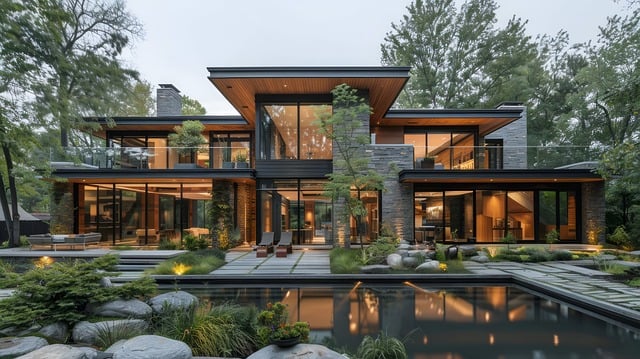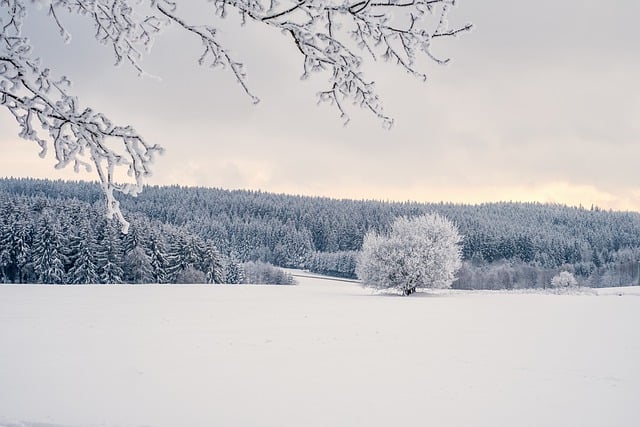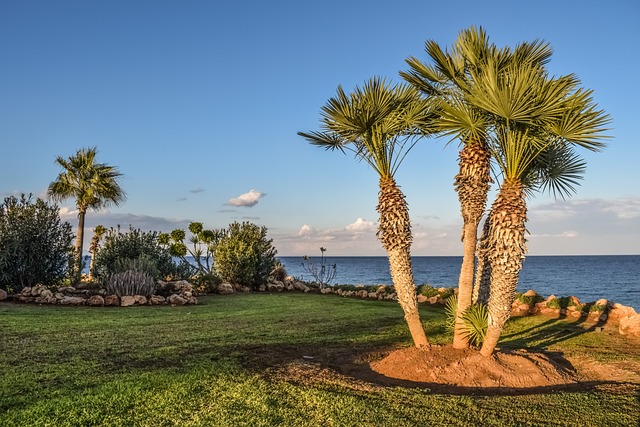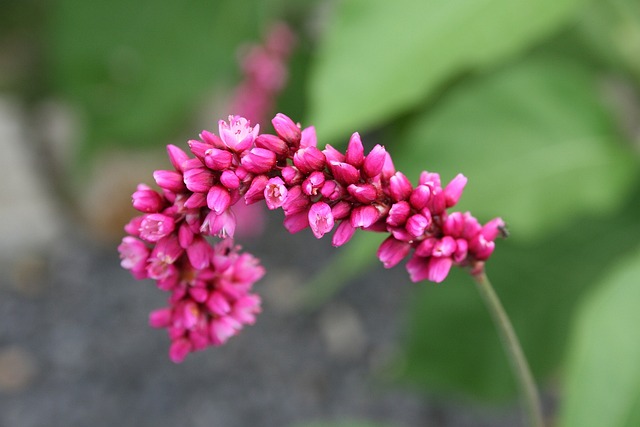This discussion focuses on the integration of ceramics, tiles, and natural stone as landscape material options to enhance outdoor spaces. It emphasizes the importance of choosing durable, visually appealing, and eco-friendly materials that cater to modern design trends emphasizing sustainability. The best materials for landscaping should not only offer aesthetic value but also contribute to environmental responsibility. Natural stone stands out as a preferred option due to its longevity and versatility, with the added benefit of being sourced responsibly. Gravel and mulch are highlighted as practical alternatives, with gravel providing a low-maintenance solution for ground coverage and water drainage, while mulch benefits soil health and plant growth. The key message is that by selecting from these sustainable landscape materials like natural stone, gravel, or mulch, you can create visually appealing and functional outdoor spaces that align with contemporary eco-conscious design principles. These landscape material options offer a balance between practicality, aesthetic appeal, and environmental sustainability for your landscaping needs.
Embarking on a landscaping project can transform your outdoor space into a visually arresting sanctuary. To achieve this, consider the integration of ceramics and tiles as vibrant accents that not only enhance aesthetic appeal but also offer diverse material options for modern landscape design. This article delves into the best materials for landscaping, from eco-friendly and sustainable hardscape elements to a comparison of outdoor materials like natural stone versus gravel and mulch. Discover how selecting the right landscape material options can elevate your garden’s beauty while maintaining an environmentally conscious approach to modern landscape supplies.
- Harnessing Ceramics and Tiles as Vibrant Accents in Landscape Design
- Exploring Optimal Material Options for Modern Landscapes
- Eco-Friendly and Sustainable Hardscape Elements for Your Outdoor Space
- Comparing Outdoor Materials: The Merits of Natural Stone vs. Gravel and Mulch in Landscaping
Harnessing Ceramics and Tiles as Vibrant Accents in Landscape Design

Incorporating ceramics and tiles into landscape design can transform a mundane outdoor space into a vibrant canvas of colors and textures. Landscape material options are myriad, with ceramics and tiles standing out as particularly versatile elements that offer both aesthetic appeal and durability. When selecting the best materials for landscaping, it’s important to consider outdoor hardscape materials that not only enhance visual interest but also endure various climatic conditions. Eco-friendly landscaping materials are gaining prominence among modern landscape supplies, as they align with the sustainable practices increasingly sought after by homeowners and designers alike. Ceramics and tiles made from recycled content or locally sourced clay can be eco-conscious choices that contribute to a greener environment without compromising on style.
In addition to their visual impact, ceramics and tiles are practical in terms of functionality and maintenance. They provide a low-maintenance solution that withstands wear and tear, making them an excellent option for high-traffic areas. Natural stone for landscaping, when used alongside these materials, can create a cohesive and sophisticated look. For instance, gravel vs mulch comparisons often highlight gravel’s longevity and low maintenance, while mulch provides organic enrichment to the soil as it breaks down. By thoughtfully integrating a variety of sustainable landscape materials like ceramics, tiles, and natural stone, landscapes can become both functional and beautiful spaces that reflect contemporary design trends. These materials not only add a pop of color but also offer longevity and versatility to outdoor settings, making them one of the most adaptable modern landscape supplies available today.
Exploring Optimal Material Options for Modern Landscapes

When integrating ceramics or tiles for colorful accents in modern landscapes, selecting optimal material options is paramount. Natural stone emerges as a top choice among the best materials for landscaping, offering both aesthetic appeal and durability. Its versatility allows it to complement various design styles while withstanding the elements over time. In contrast to synthetic alternatives, natural stone is often more sustainable, aligning with the growing trend towards eco-friendly landscaping materials.
For outdoor hardscape materials, gravel vs mulch presents an interesting dichotomy. Gravel provides a low-maintenance and permeable surface that can enhance drainage and reduce erosion. It comes in a multitude of colors and sizes, allowing for creative design elements that contribute to the overall landscape aesthetic. Mulch, on the other hand, is excellent for soil health and maintaining moisture retention around plants. When selecting between these two, consider the specific needs of your landscape and the visual impact you wish to achieve.
Modern landscape supplies encompass a range of materials that cater to both the functional and decorative aspects of garden design. From natural stone and gravel to eco-friendly options like recycled glass or permeable pavers, today’s landscapers have access to an array of sustainable landscape materials that can create visually stunning and environmentally conscious outdoor spaces. The choice of material not only influences the visual cohesion and longevity of the landscape but also its ecological footprint, making it a critical decision in the planning phase. As such, it’s important to carefully evaluate each option based on the specific requirements of your project, ensuring that the materials selected will serve both the aesthetic and eco-friendly goals of your modern landscape design.
Eco-Friendly and Sustainable Hardscape Elements for Your Outdoor Space

When considering eco-friendly and sustainable hardscape elements for your outdoor space, it’s crucial to explore a variety of landscape material options that minimize environmental impact while enhancing aesthetics. Natural stone, a classic and versatile choice among the best materials for landscaping, offers a timeless appeal and can be sourced responsibly from local quarries, reducing transportation emissions. Unlike synthetic alternatives, natural stone is a renewable resource when extracted sustainably, contributing to the overall eco-friendliness of your landscape design.
In addition to natural stone, modern landscape supplies such as gravel and mulch serve as effective outdoor hardscape materials. Gravel vs mulch debates often center on their individual benefits: gravel’s longevity and low maintenance contrast with mulch’s superior soil enrichment and moisture retention properties. Both can be sourced from local suppliers to lower carbon footprints associated with long-distance transportation. For those seeking the most sustainable landscape materials, options like recycled glass or permeable pavers not only add colorful accents but also promote water conservation and reduce landfill waste. These materials align with contemporary eco-conscious design philosophies, ensuring that your outdoor space is both beautiful and responsible.
Comparing Outdoor Materials: The Merits of Natural Stone vs. Gravel and Mulch in Landscaping

When considering landscape material options for your outdoor spaces, it’s crucial to evaluate the best materials for landscaping that balance aesthetic appeal with functionality and sustainability. Natural stone stands out among modern landscape supplies as a timeless and versatile choice for hardscaping elements. Its durability and wide range of colors and textures can enhance any setting, offering a unique touch to your outdoor design. Furthermore, natural stone for landscaping not only adds visual interest but also endures the elements, making it a wise investment over time. On the other hand, gravel vs mulch presents a more economical option for landscape coverage, each serving distinct purposes within a garden or yard. Gravel, with its varied sizes and robust nature, is excellent for creating pathways, draining water effectively, and providing a low-maintenance ground cover. Mulch, on the other hand, enriches the soil by decomposing and improving soil structure and fertility, making it a preferred option for eco-friendly landscaping materials that promote plant health and sustainability. Both options have their merits, and the choice often comes down to the specific needs and design vision of the landscape.
Incorporating ceramics or tiles into landscape design offers a splash of color and texture that can elevate any outdoor space. This exploration into landscape material options has underscored the importance of considering best materials for landscaping that not only enhance visual appeal but also align with modern aesthetics and environmental sustainability. From the eco-friendly and sustainable hardscape materials available to the contrasting merits of natural stone versus gravel and mulch, homeowners and designers now have a wealth of options at their disposal. Ultimately, integrating these vibrant accents thoughtfully can result in a harmonious blend of functionality and beauty within any landscape.
